Here are some charts made from data from the book This Time Is Different (2009), available here in Chart 11.2.
This data is not so helpful in itself. The real history is more complicated, and a proper narrative for each country would be worthwhile. Nevertheless, it gives an idea of what things were like in the era of coinage.
One pattern from that era seems to be one of a gold coin with long-term reliability, such as the florin or ducat which remained unchanged for centuries. But, there would also be a silver coinage, that was regularly debased or stamped in increasing denomination. Where the claimed silver content is very low (under 1.0 grams), probably the regular coinage was denominated in multiple currency units. For example, the Spanish silver dollar was an eight-real piece, and the British shilling was a 12-pence piece. This itself follows the history of the Byzantine coinage, where there was, beginning in the fourth century, a highly reliable gold coinage (the solidus) that remained unchanged for centuries, and a silver or copper coinage of lower quality.
Although the impression from these charts is one of variability, there is a lot of historical compression involved. If a coin’s value (and contained metal content) changed twice a century, that would look like a lot of changes on a chart like this, while it would mean one or two changes in a lifetime for people living at the time.
Here is Britain:

We see that, from the 1550s, the British pound became quite reliable, and continued that reliability until 1931. The various changes between 1100 and 1600 are not such a big deal except for the major debasements under Henry VIII at the beginning of the 16th century.
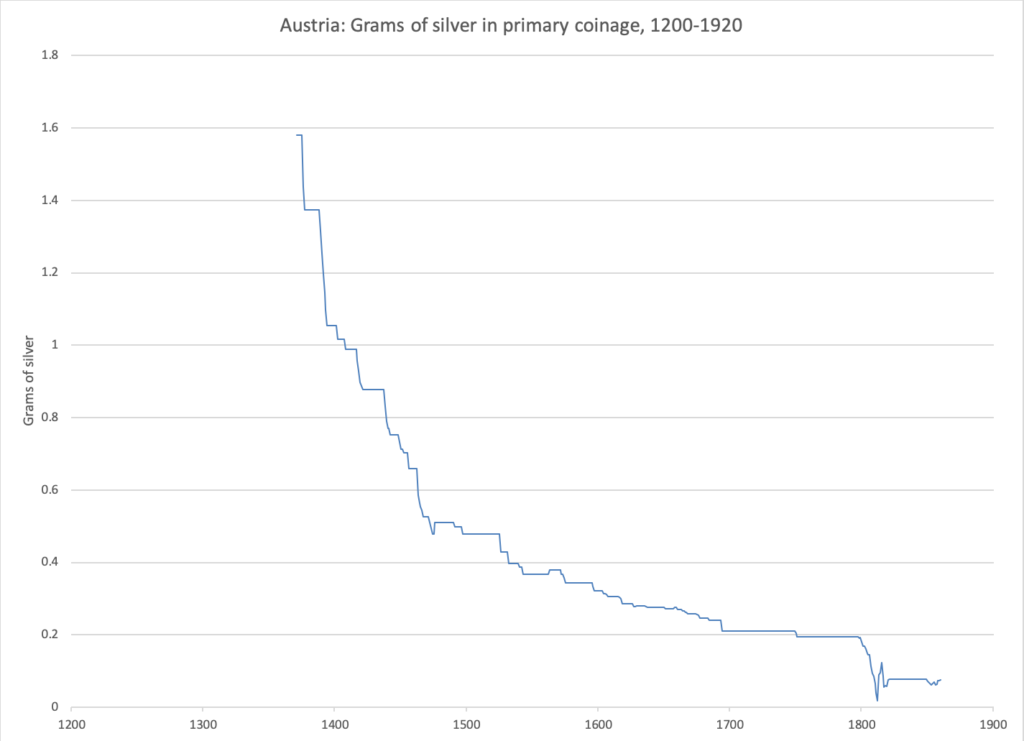
This looks horrible, but in the 1400s, the silver content fell from 1.6g to 0.4g, a decline of 4:1 over a century. That is a much better performance than anything today. The US dollar has declined by 90:1 over the last 100 years. Even so, the contrast with Britain is clear.
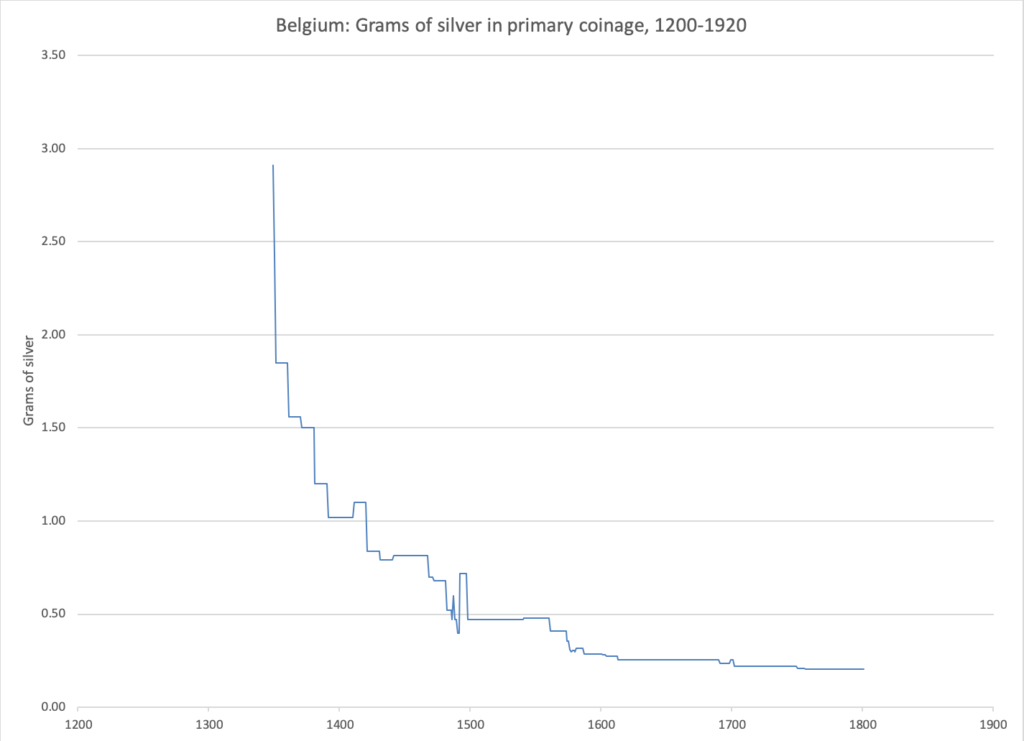
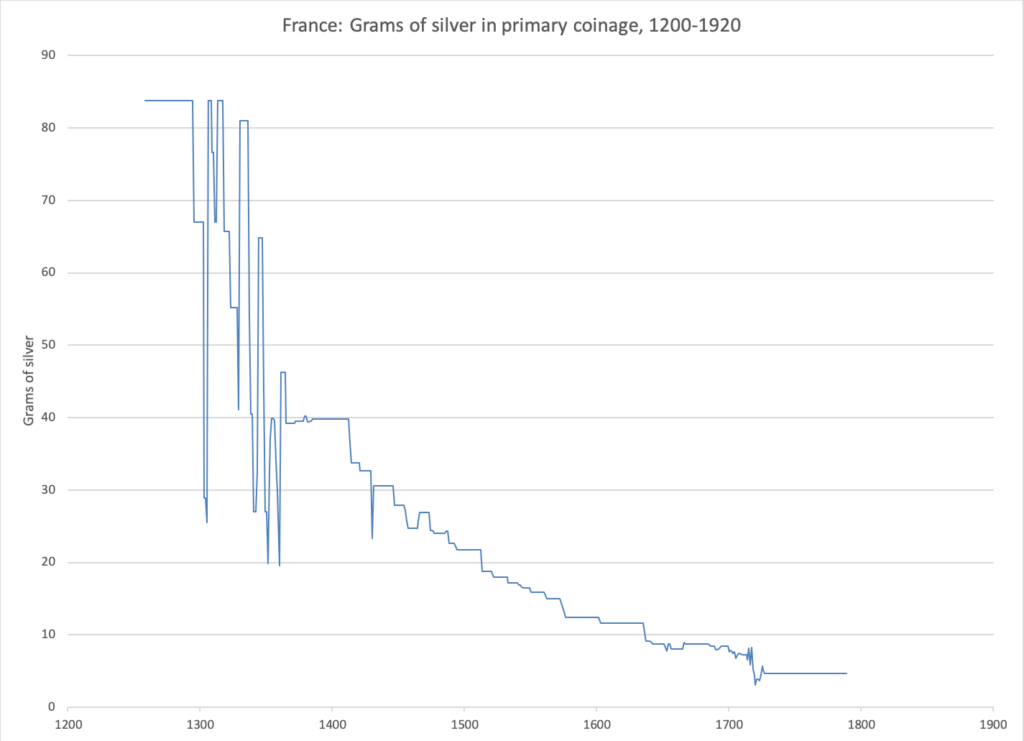
This up/down pattern in the 1300s is unusual. It might be a matter of debasing the coinage during wartime, and then returning to full-weight coins afterwards.
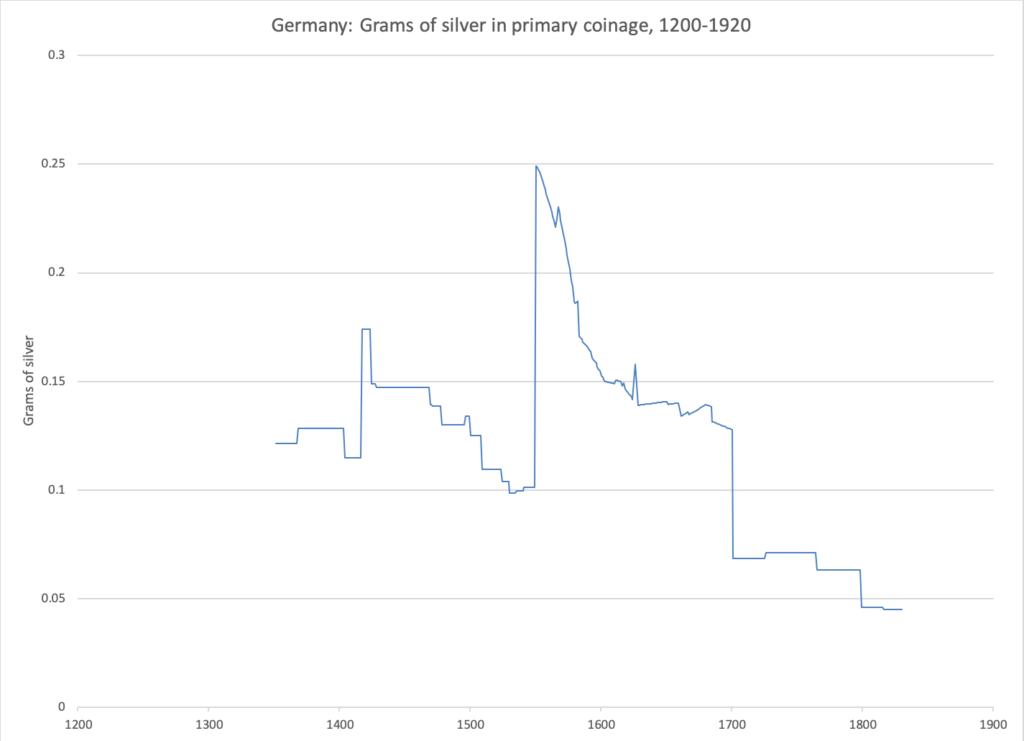
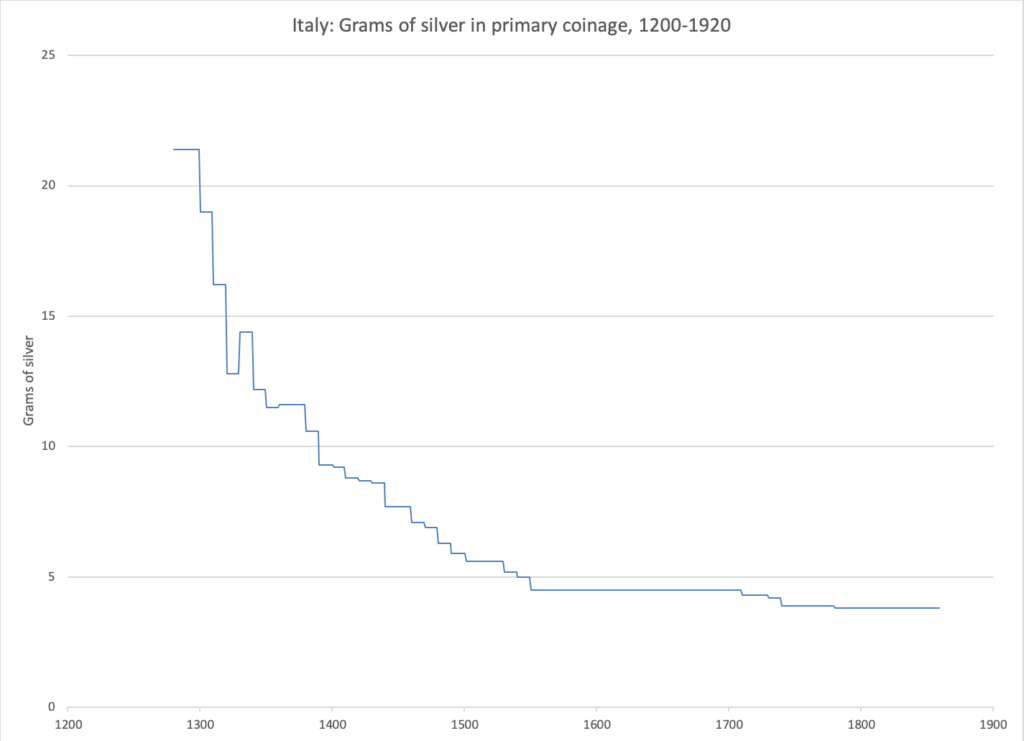
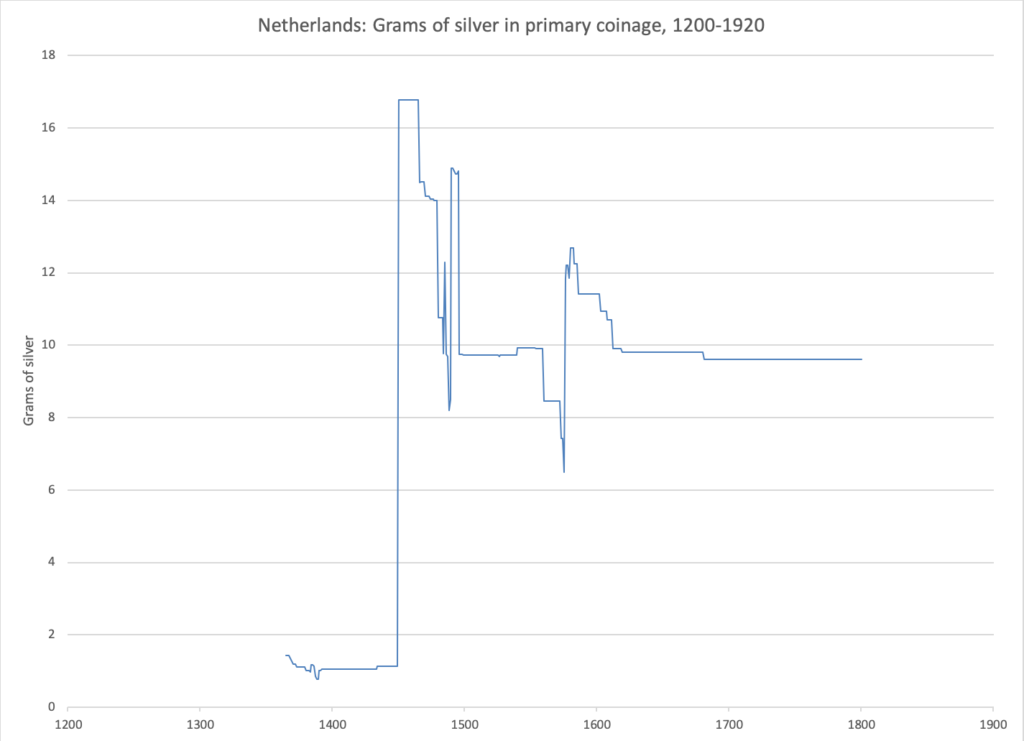
You can see the high degree of reliability during the 1600s and 1700s, a time when the Netherlands was the financial capital of Europe.
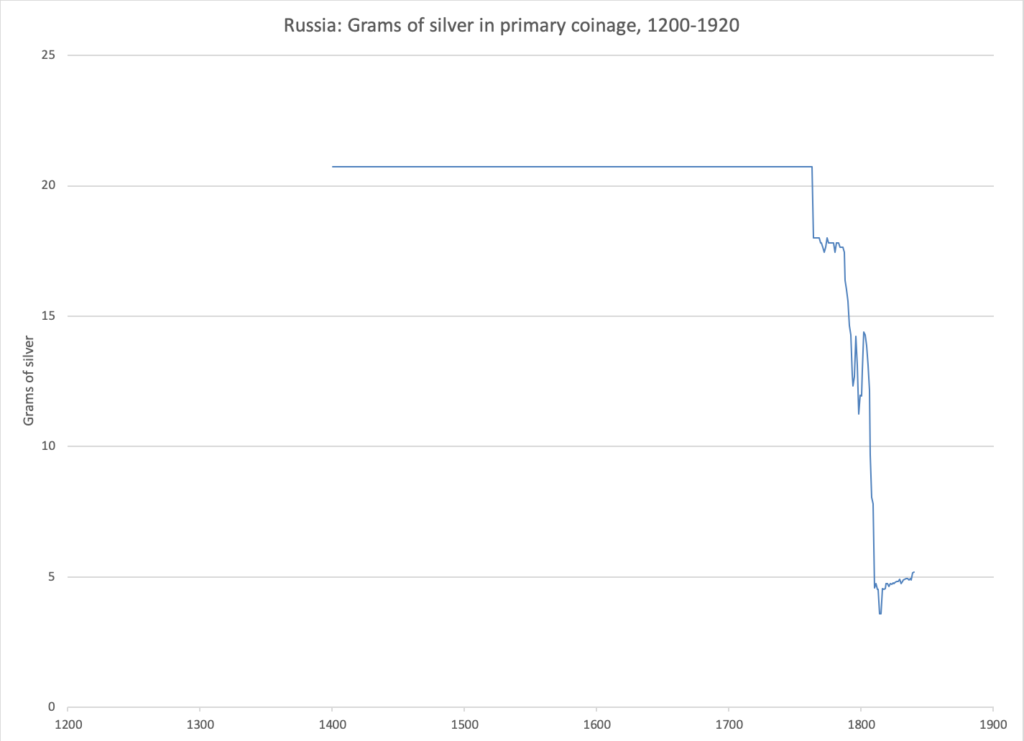
The mess around 1800 corresponds to the Napoleonic Wars.
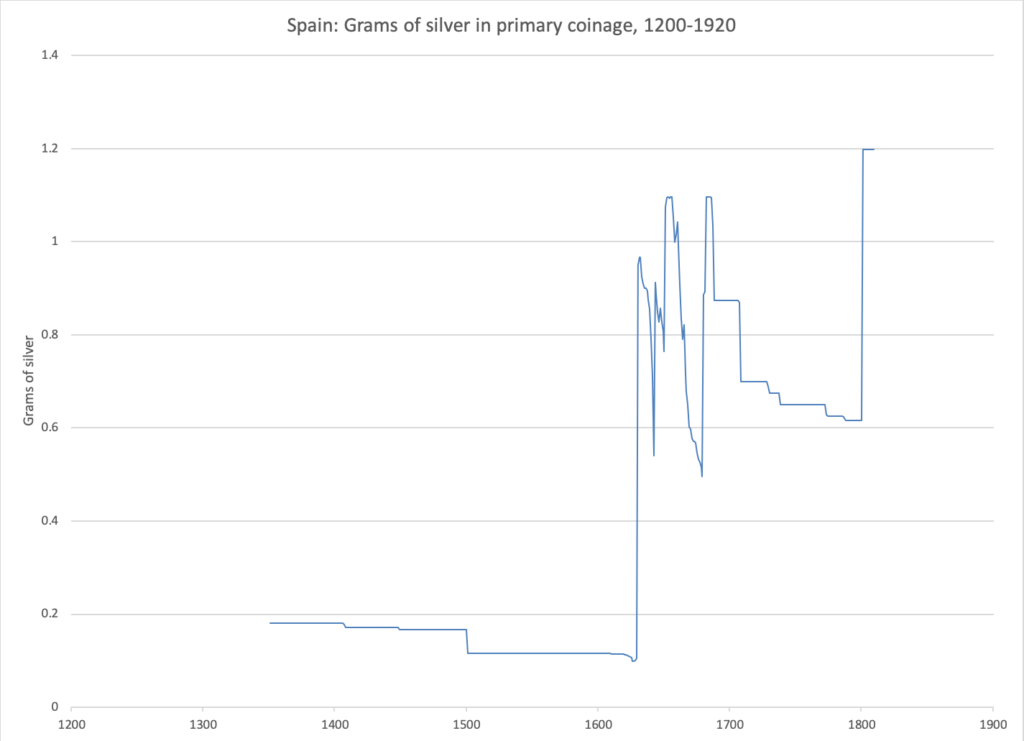
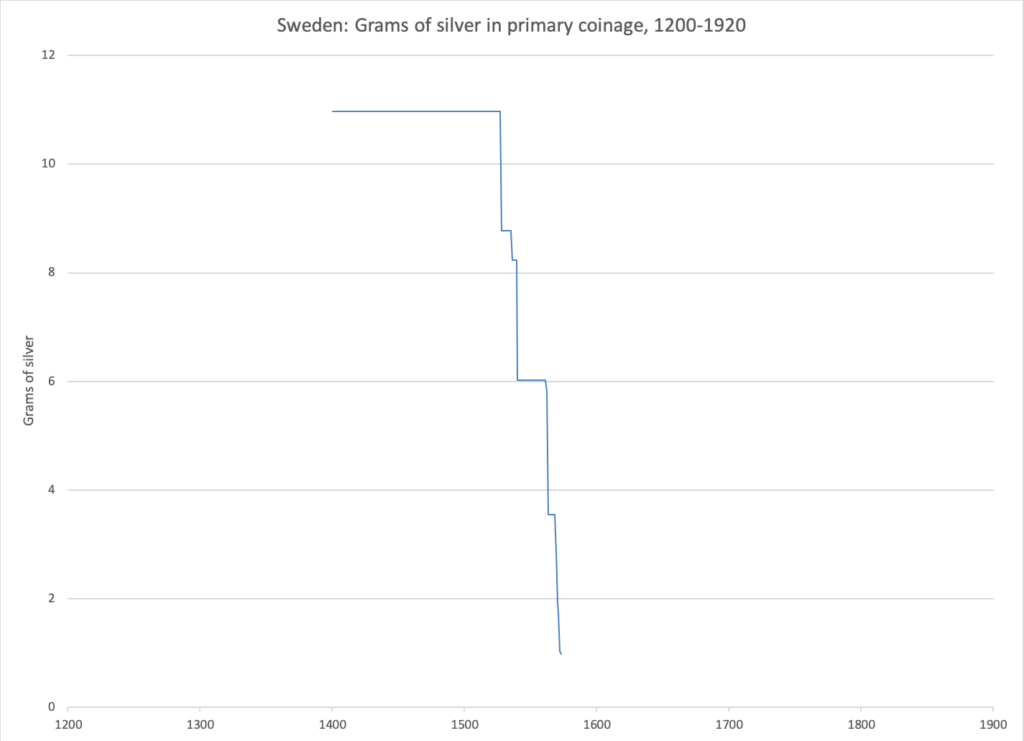
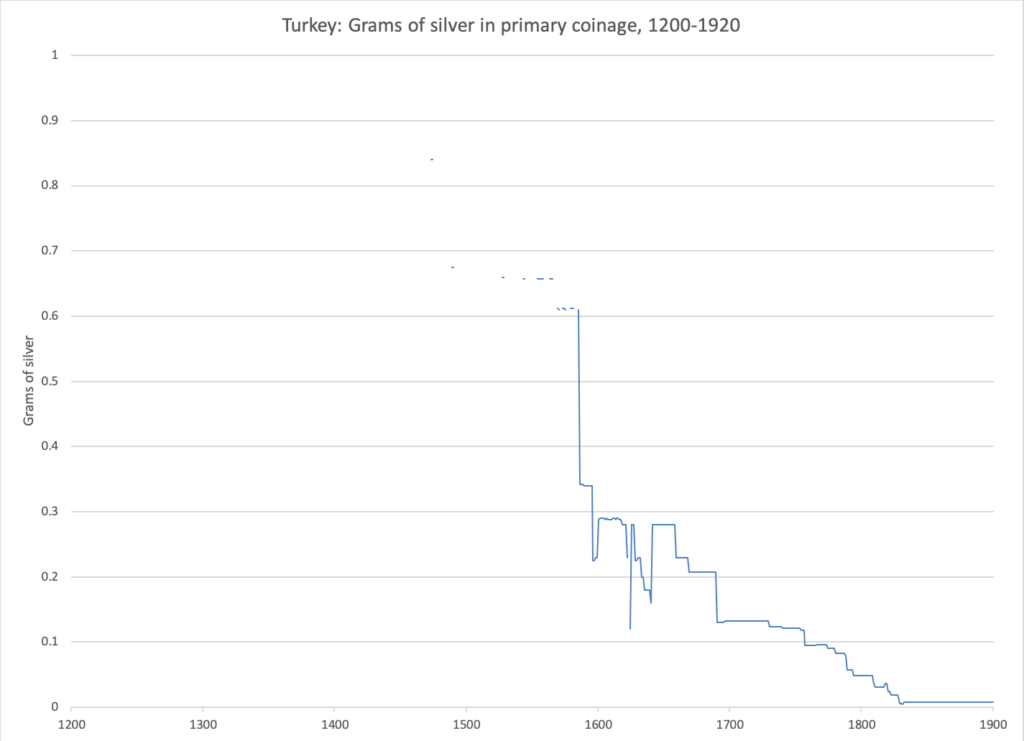
Turkey gonna Turkey. They are still doing it today.

